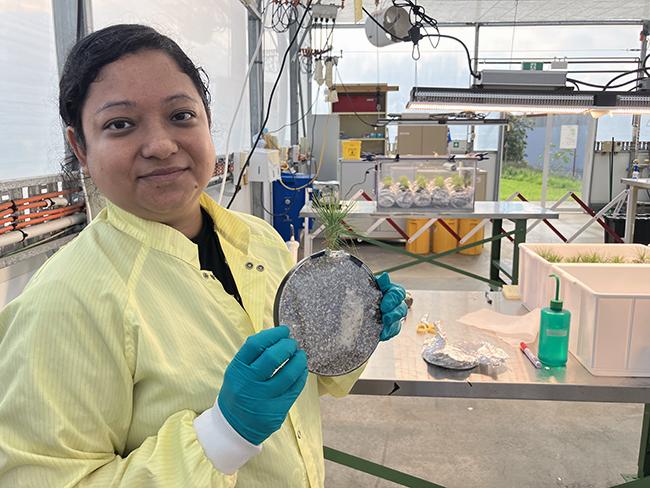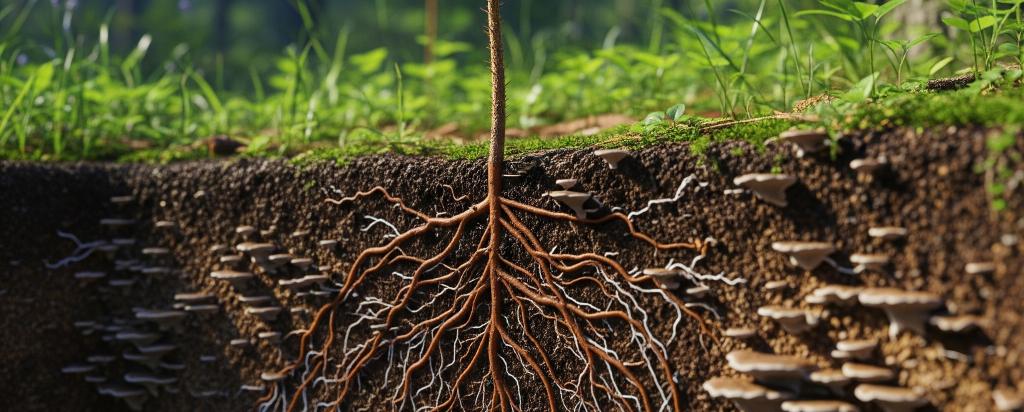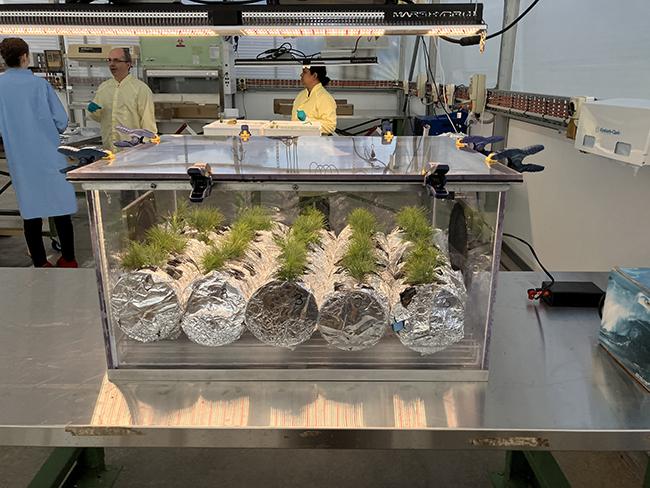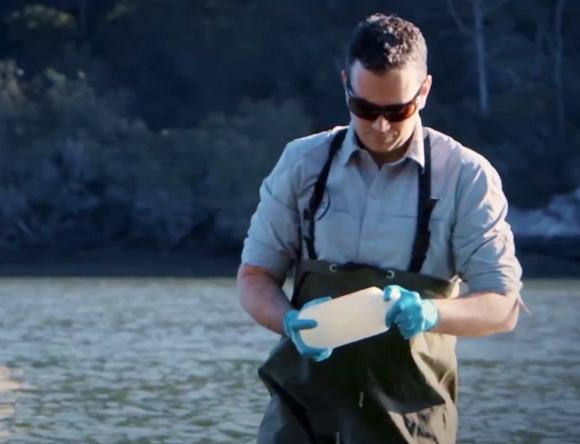

Published on the 11th July 2025 by ANSTO Staff
Key Points
-
Research with Western Sydney University is exploring the symbiotic relationship between mycorrhizal fungi and pine roots to develop a process to sustainably increase forestry growth and yield
-
The study in progress aims to identify which individual fungal strains within a mycorrhizal species is most effective in promoting plant health
-
The use of stable and radioisotope tracers at ANSTO allow scientists to identify how nutrients are transported in different species of pine using different types of fungi
Dr Tom Cresswell, an environment research scientist at ANSTO, is collaborating with PhD candidate Romika Shrestha and Associate Professor Jonathan Plett from Western Sydney University to investigate how nitrogen and phosphorus provided by symbiotic mycorrhizal fungi are exchanged at the root interact for photosynthetically fixed carbon from pine trees.
Nitrogen is vital for producing chlorophyll and proteins and phosphorus is crucial for root development, energy transfer and seed formation.
The research team is attempting to quantify the bi-directional movement of nutrients that will support improved growth rate of the plant and carbon sequestration in the fungal biomass below-ground.
"This study aims to understand how the fungi deliver nutrients to the roots and then how the roots deliver carbon to the fungus,” explained Dr Cresswell.
The research investigates the symbiotic relationship between two pine species and 8 different strains from different ectomycorrhizal fungal species.
A fungal strain is an individual isolated from within a microbial species, with unique properties afforded by its specific genetic makeup.
Nutrient exchange between the pine tree roots and the fungal strains was measured using stable-isotope tracers, carbon-13 and nitrogen-15 and radioactive phosphorous-32 tracers.
“The analysis will use carbon-13 in the fungi and nitrogen-15 and phosphorus-32 in pine needles to work out which species of fungi is the best at nutrient exchange,” added Dr Cresswell.
In addition to quantifying nutrient exchange, the research team is using an autoradiography imagining technique to better visualise where phosphorus-32 has gone within the roots and needles of the plants. Further research is needed to understand the differences between phosphorous 32 uptake in the different fungal isolates.
“The idea being that if we can work out which fungal strain is the most effective at that relationship, you could potentially go in, inoculate the soil of your pine plantations, and increase the growth rate or the yield of lumber that you're getting,” said Dr Cresswell
Dr Tom Cresswell, an environment research scientist at ANSTO, is collaborating with PhD Candidate Romika Shrestha and Associate Professor Jonathan Plett from Western Sydney University to investigate how nitrogen and phosphorus provided by symbiotic mycorrhizal fungi are exchanged at the root interact for photosynthetically fixed carbon from pine trees.
Nitrogen is vital for producing chlorophyll and proteins and phosphorus is crucial for root development, energy transfer and seed formation.
The research team is attempting to quantify the bi-directional movement of nutrients that will support improved growth rate of the plant and carbon sequestration in the fungal biomass below-ground.
This study aims to understand “how the fungi deliver nutrients to the roots and then how the roots deliver carbon to the fungus,” explained Dr Cresswell.
Thanks to Macy Huang, a student at ANU, for contributing this content.



